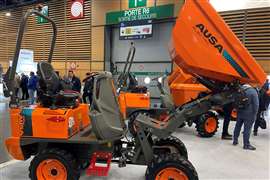Bring in the transformer
20 March 2008
On a cold winter night in Wisconsin in February 2006, American Transmission Co. (ATC) learned that a transformer had unexpectedly failed. Suddenly, a dreaded possibility now balanced on the edge of probability: blackout. Households and businesses were in danger of losing power, although an emergency back-up system was allowing the grid to function normally for the time being. However, the failed transformer needed to be replaced quickly because each day that they continued to rely on their backup systems the likelihood of a potential disaster increased. It was an emergency situation.
It was quickly determined that the best and only real option was a spare transformer that was 40 miles (64 km) away. But the move had to happen quickly as the spring thaw was quickly approaching and, when it arrived, heavy hauls would be restricted by the state.
To complicate matters, the permitting service ATC hired told them that there was no way to get the proper permits before six weeks, when the spring thaw would begin. Undaunted, ATC took matters into its own hands, contacting state and local governments, apprising them of the situation, and acquiring the critically needed permits. But then the plan was literally derailed. The original plan had the transformer being hauled by rail, but two weeks before the spring thaw, it was determined that it was too large to be transported by railcar. Through its general contractor, Kenny Construction, ATC's next call was to Barnhart Crane and Rigging. Barnhart's team quickly accepted the challenge to haul the replacement transformer.
Barnhart's planning team met ATC and Kenny Construction to formulate the over-the-road transport plan. By the end of the first day a solid concept was developed and Barnhart crews went into action. The mobilisation plan called for the use of a 12 dolly rig, and within 48 hours Barnhart crews began rigging for the removal of the replacement transformer. Soon all components and transport team members had arrived and assembly of the rig began.
Using a gantry system, the replacement transformer was removed and set onto a 10 line Goldhofer trailer for transfer to the dolly rig. Barnhart relocated the gantry to the dolly rig and offloaded the transformer. Quickly and thoughtfully, the Barnhart team completed the rig, and the transformer was roadworthy. Then on a clear night with temperatures hovering at 10 degrees F (-10 degrees C), and as the clock literally struck midnight, and just 10 days after receiving the call, Barnhart began hauling the replacement unit.
Utility crews and local authorities led the 40 mile trek. The schedule and planning was executed perfectly and the haul was smooth and incident-free. By 9 a.m. the transformer was parked at the substation.
Later the unit was removed from the dolly rig and staged. The new transformer was then lifted with the gantry, set onto the Goldhofer trailer, and moved to location where it was offloaded and set.
To put the transformer into place, the gantry was reset adjacent to the pad and Barnhart's slide track was constructed to move the transformer into its final home. Wisconsin Public Service Co. moved quickly to dress out, test and commission the transformer for ATC.






